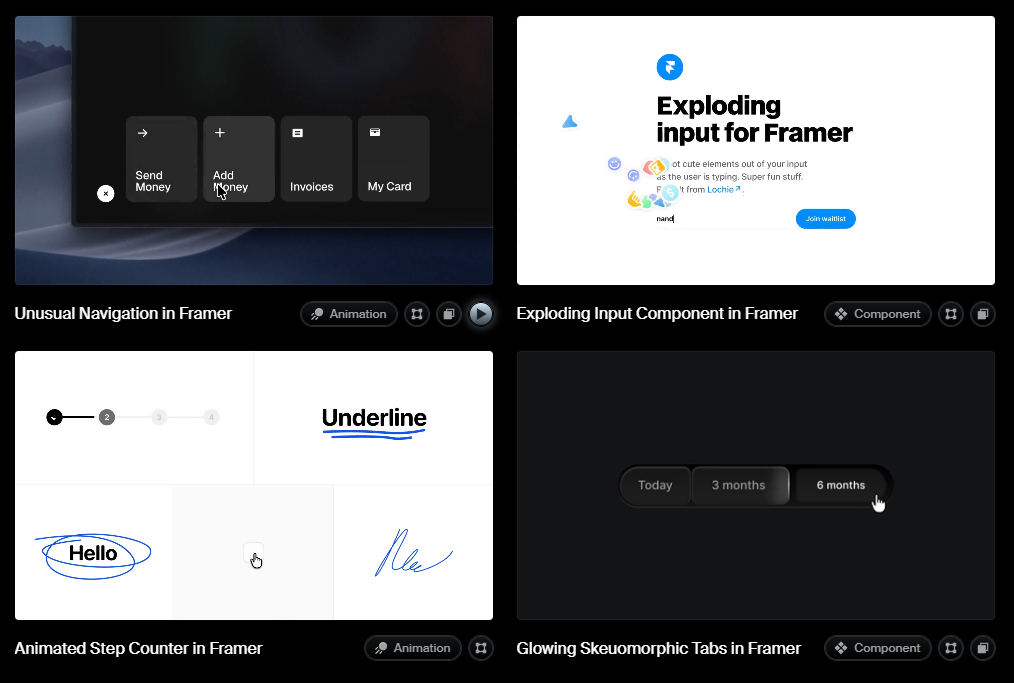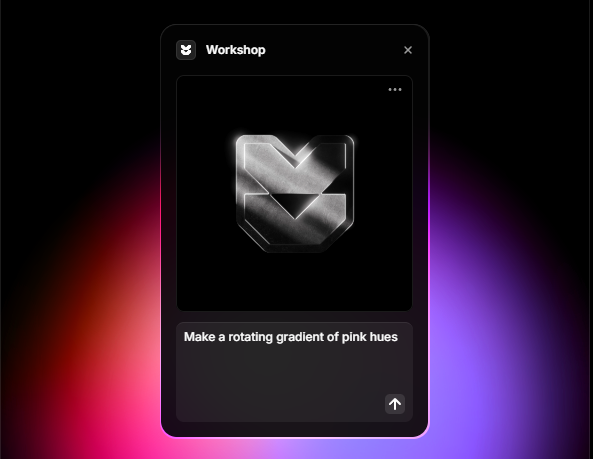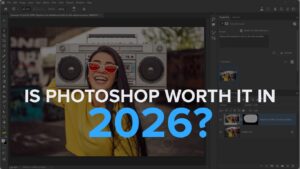In a world where client expectations are higher than ever, a generic, template-driven website built on a platform designed for hobbyists just doesn’t cut it. You need something that can translate your unique creative vision into a living, breathing digital experience without forcing you to become a full-time software developer.
This is the exact problem that high-performance tools are built to solve. For a long time, there was a massive gap between what you could design in a tool like Figma or Sketch — key apps in the larger creative software ecosystem — and what you could realistically build without a team of coders. You either compromised your design to fit a template or you faced a brutal and expensive handoff process with a development team.

Framer is one of the most powerful players aiming to close that gap for good. It promises the ability to design and publish professional, production-quality websites from a single, visually-focused platform. But is it just another tool adding noise to an already crowded market, or is it the real deal for creative professionals who need to execute at the highest level? Let’s break it down.
What Exactly is Framer?
Framer is a web-based design and building tool that lets you create and publish fully responsive, high-performance websites. Think of it as a hybrid: it has the freeform design canvas and vector editing capabilities of a tool like Figma, but with the power to add advanced animations, interactive components, and a content management system (CMS), and then publish it all to the web with a single click.
It started its life as a code-based prototyping tool favored by product designers at companies like Google and Uber. This technical foundation is key—it’s what allows Framer to handle complex interactions and animations that most “no-code” builders can’t touch. Over the years, it has evolved into a primarily visual, no-code platform. You no longer need to write code to use it, but the power of that original engine is still there, working under the hood.
This puts Framer in a unique position. It’s not a simple, beginner-friendly builder like Squarespace, nor is it a developer-heavy platform like Webflow can sometimes be. It’s a design-first website builder for people who are visually fluent and want total control over the final product. If you’ve ever designed a beautiful layout and then felt a pit in your stomach thinking about how to actually get it online, Framer is built specifically for you.
You can check out the official product at Framer’s website.
How Creative Professionals Can Use It?
This is where it gets interesting. A tool is only as good as its practical application in your workflow. A professional website is a critical step for anyone trying to turn their passion into a profession. Here are the specific ways you can leverage Framer to build a better web presence for your creative work or for your clients.
From Static Design to Live Website in Minutes
This is Framer’s killer feature, especially for designers who work in Figma. The workflow is seamless. You can literally copy your designs from Figma and paste them directly into Framer’s canvas.
Framer has a free Figma plugin that takes this even further, allowing you to import your entire Figma project—with all your layers, components, and styles intact. The tool does a remarkable job of converting Figma’s Auto Layout and component properties into Framer’s responsive layout system (called Stacks).
Actionable Workflow:
- Finalize in Figma: Finalize your website’s UI design in Figma as you normally would. Ensure your layers are well-organized and that you’re using Auto Layout for responsive behavior.
- Install the Plugin: Get the official “Framer for Figma” plugin.
- Copy and Paste: Select the frames you want to bring over, run the plugin, and copy them to your clipboard.
- Paste in Framer: Open a new Framer project and paste. Your design will appear on the canvas, almost perfectly preserved.
This process eliminates the traditional “handoff” phase. There’s no more exporting assets, creating spec sheets for developers, or seeing your design get lost in translation. What you design is what you build and what you publish. This speed is a superpower for creatives who want to get their ideas out into the world fast.
Building Advanced Interactions and Animations
This is where Framer truly separates itself from the pack. While most builders offer basic fade-ins or slide-ups, Framer provides a robust suite of tools for creating the kind of fluid, dynamic animations that make a website feel premium and engaging.
Key Features for Interaction Design:
- Effects: These are pre-built, easy-to-apply animations. You have Scroll Animations (elements that react as you scroll down the page), Appear Effects (elements animating in as they enter the viewport), and Hover Effects (changing an element’s state when a user mouses over it). For instance, you could make a project thumbnail subtly scale up and reveal a caption on hover in about 30 seconds.
- Scroll Transforms: This is a more advanced feature that gives you granular control over how an element changes based on scroll position. A classic example is a parallax effect, where a background image moves at a different speed than the foreground content. In Framer, you can apply this to any element and customize properties like opacity, scale, rotation, and position, all tied directly to the user’s scroll.
- Components and Variants: Just like in Figma, you can create reusable components. But in Framer, these components can have different “variants” or states. You can design a button’s default state, its hover state, and its pressed state as separate variants. Then, you can create interactions that transition between these states automatically. This is incredibly powerful for creating interactive navigation, custom cursors, or animated icons.
This level of control means you can build a portfolio site where your work truly comes to life, rather than just sitting there as a static grid of images.

Animations in Framer
Managing Content with the Built-in CMS
If you’re a writer, a photographer with a lot of projects, or anyone who needs to regularly update their website with new content, a Content Management System (CMS) is non-negotiable.
Framer includes a built-in CMS that is both powerful and easy to use. You can create different “collections” for different types of content. For example:
- For a Photographer: You could create a “Projects” collection. Each item in the collection would have fields for a project title, a cover image, a gallery of photos, a client name, and a text description.
- For a Writer/Blogger: You could create a “Blog Posts” collection with fields for a title, author, publish date, hero image, and the body of the article (rich text).
Once you’ve defined the structure, you simply add your content in a simple, spreadsheet-like interface. On your design canvas, you then draw a layout for one of these items. You can then tell Framer to automatically populate a grid or a list with all the content from your collection. When you add a new blog post or project, the website updates automatically. This is essential for keeping your site fresh without having to redesign pages every time.
Leveraging AI for Faster Workflows
The reality of the AI era is that these tools are here to accelerate your process, not replace your creativity. Framer has integrated AI in a very practical way to help you get past the “blank page” problem and handle some of the more tedious tasks.
- AI Generate Page: You can write a simple prompt describing the type of page you want to build (e.g., “A portfolio landing page for a landscape photographer with a moody and cinematic feel”), and Framer AI will generate a fully designed, responsive starting point with multiple sections. It’s not a final product, but it’s a massive head start.
- AI Text Generation and Editing: If you’re struggling with copy, you can select any text element and have the AI write, shorten, or change the tone of the text. This is useful for generating headlines, body copy, or button text quickly.
- AI Localization: Framer’s AI can translate your entire site into different languages with a click, creating localized versions automatically. This is a huge advantage for creatives looking to reach a global audience.

The key is to view these features as a high-powered assistant. They handle the first draft or the grunt work, freeing you up to focus on the high-level strategy and creative refinement that only you can provide. Mastering these tools is about working smarter, not harder. If you’re serious about building a sustainable creative life, that kind of leverage is invaluable. To go deeper on that philosophy, check out this free email course on the Seven Levers For Life, which is all about building systems for freedom and creativity.
Limitations to Consider
No tool is perfect, and it’s important to be direct about the tradeoffs.
- Learning Curve: Framer is not as simple as Squarespace or Wix. Because it’s more powerful, there are more concepts to learn, such as Stacks, Variables, and Effects. If you’re already familiar with Figma, the transition will be MUCH easier. If you’re completely new to modern design tools, expect to spend a few days getting comfortable.
- E-commerce: While Framer has integrations with e-commerce platforms like Gumroad and Shopify, it does not have a native, built-in e-commerce system. If your primary goal is to run a large online store with hundreds of products, a dedicated platform like Shopify is still the better choice.
- Hosting and Pricing: Framer is a premium, all-in-one platform, and its pricing reflects that. You can’t export the code and host it somewhere else. This is standard for most no-code builders, but it’s something to be aware of. You are investing in their ecosystem.
Is Framer Right For You?
Let’s get straight to the point. This isn’t about finding the “best” tool, it’s about finding the right tool for your specific needs as a creative professional.
Framer is likely the right choice if:
- You live in Figma: If you’re a designer who already thinks in terms of components and responsive layouts, Framer will feel like a natural extension of your existing workflow.
- You value custom design and interaction: You aren’t satisfied with generic templates and want your website to have the same level of craft and detail as your actual creative work. You want those slick micro-interactions and animations.
- You want to build and launch quickly: For client projects, landing pages, or your own portfolio, the speed from design to live publication is a massive competitive advantage for building a sustainable creative business.
- You want ONE tool: You’re tired of designing in one app, managing assets in another, and then trying to rebuild it all in a clunky website builder.
Framer might NOT be the right choice if:
- You need something extremely simple: If all you need is a basic, “good enough” website up in an hour, the learning curve might be overkill.
- Your primary focus is a large-scale e-commerce store: A dedicated platform like Shopify is better optimized for managing complex inventory, shipping, and taxes.
- You prefer to write your own code: If you’re a developer who wants 100% control over the codebase and hosting environment, Framer’s all-in-one nature might feel restrictive.
Ultimately, choosing a tool like Framer is an investment in your own creative capability. It requires a willingness to learn something new and push beyond the easy, templated solutions that everyone else is using. It’s about daring to build a platform that truly represents the quality of your work. Embracing that challenge is the first step toward building something truly remarkable. For more on that mindset, read the free chapter from Chase Jarvis’ book “Never Play It Safe,” which is all about why stepping outside your comfort zone is the only way to grow.


















